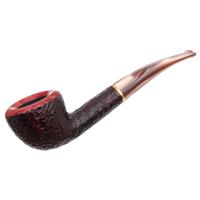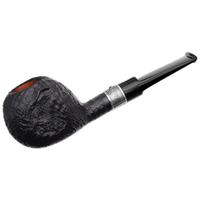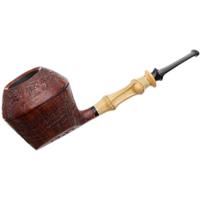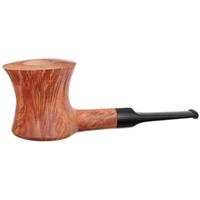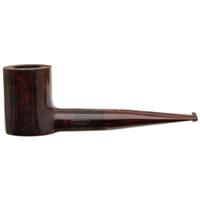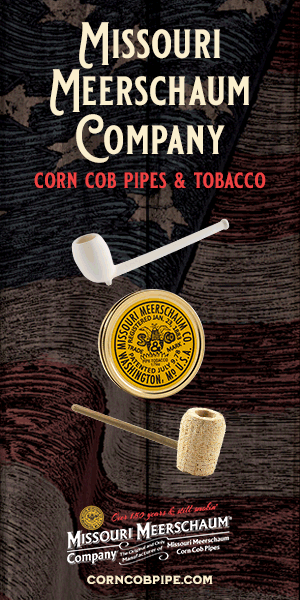I wonder how do manufacturer select briar. When buying a new briar pipe, some online sites claim their briar is high grade. What means high grade? How do I inspect if a briar is of high grade? And if this is the reason some brands like Dunhill cost more than others due to high grade briar use? Pls give me some information. Thanks.
Can someone explain briar grade in details?
- Thread starter dajibash
- Start date
You are using an out of date browser. It may not display this or other websites correctly.
You should upgrade or use an alternative browser.
You should upgrade or use an alternative browser.
- Status
- Not open for further replies.
Let me first start off by saying that I am not extremely qualified to answer this, I dont know everything about the topic, but I can at least give you some insight.
Briar is a natural substance, therefore, it has, and can have, many flaws. A high grade of briar wont have any flaws, no fills no pits nothing. It should also have great grain, grain really serves no smoking differences in my opinion, but it makes for a pretty pipe. A high grade of briar should be, but doesnt have to be, pretty old. The older the briar, the more porous it is, the more porous it is the better the smoke will be. Older more porous briars will be lighter too, you can have a very large pipe that weighs almost nothing, many experienced pipe smokers will immediately recognize it by its weight as a good piece of wood.
When you wrap beautiful grain with zero flaws with an older more porous age, you will end up with a high grade of briar, and usually a more expensive pipe.
Dunhills are kind of a tricky explanation. First, they do use extremely flawless briar, even if they have a thought that there may be a flaw, and there turns out there isnt, they dont use the wood. Second, after they harvest the burl they age it for a long time, they dont say exactly how long, but some speculate about 50 years. Third they have a proprietary oil treatment process that is secret, that (allegedly) makes for a better smoke. You also pay for the dunhill name, and thats a big part of it.
Personally I do think dunhills smoke differently than other pipes, not neccesarily better, but different, worth experiencing at least.
I hope I gave you some help
John
Briar is a natural substance, therefore, it has, and can have, many flaws. A high grade of briar wont have any flaws, no fills no pits nothing. It should also have great grain, grain really serves no smoking differences in my opinion, but it makes for a pretty pipe. A high grade of briar should be, but doesnt have to be, pretty old. The older the briar, the more porous it is, the more porous it is the better the smoke will be. Older more porous briars will be lighter too, you can have a very large pipe that weighs almost nothing, many experienced pipe smokers will immediately recognize it by its weight as a good piece of wood.
When you wrap beautiful grain with zero flaws with an older more porous age, you will end up with a high grade of briar, and usually a more expensive pipe.
Dunhills are kind of a tricky explanation. First, they do use extremely flawless briar, even if they have a thought that there may be a flaw, and there turns out there isnt, they dont use the wood. Second, after they harvest the burl they age it for a long time, they dont say exactly how long, but some speculate about 50 years. Third they have a proprietary oil treatment process that is secret, that (allegedly) makes for a better smoke. You also pay for the dunhill name, and thats a big part of it.
Personally I do think dunhills smoke differently than other pipes, not neccesarily better, but different, worth experiencing at least.
I hope I gave you some help
John
When it comes to grading briar it is a lot like grading pipes. It comes down to price. A high grade pipe costs more simply because it is rare. The same is true with briar. There is a lot more poor briar with sloppy grain and sandpits. The big beautiful straight grain blocks without sandpits might make up 5% of the total production. If you want these blocks you pay a very high premium price, and even then there is no guarantee and you will still end up with a high percentage of imperfections.
To give an idea of the options I have for buying briar, I can buy briar from $5 a block to $60 a block. To get the very best handpicked stuff, you will pay more than $60, and you will still lose a certain amount to flaws which puts the ultimate price even higher. So if you have $75-$100 in raw materials alone, there is no way you can spend hours (or days) working on that pipe and then sell it for $100.
So the basic answer is that each pipe maker decides what type of briar they want to use. Some of them choose less expensive briar that will smoke well but wont typically show fine grain. Others choose only the very best and still reject a certain number of those blocks. The choice they make will ultimately decide how much you will pay to own one of their pipes.
To give an idea of the options I have for buying briar, I can buy briar from $5 a block to $60 a block. To get the very best handpicked stuff, you will pay more than $60, and you will still lose a certain amount to flaws which puts the ultimate price even higher. So if you have $75-$100 in raw materials alone, there is no way you can spend hours (or days) working on that pipe and then sell it for $100.
So the basic answer is that each pipe maker decides what type of briar they want to use. Some of them choose less expensive briar that will smoke well but wont typically show fine grain. Others choose only the very best and still reject a certain number of those blocks. The choice they make will ultimately decide how much you will pay to own one of their pipes.
I wonder how much the grade really effects smoking though. I mean yeah, Im sure up to a a pint it makes a big difference, but there has to be diminishing returns eventually. I mean cam someone really tell the difference between a 50 year old piece or briar and a hundred year old one? 10 years? there has to be a pint where it reaches kind of a peak, or maybe plateau could be a better way to put it. It may get better, but not a whole lot. I don't know I could be totally wrong. Ill never own a thousand dollar Dunhil so Ill never know.
Well I think there is something to better briar making better pipes. It may have to do with the brair itself being handled differently (better processing) but ultimately a more expensive pipe means more attention to detail.
If I could make two $100 pipes or one $200 pipe, I can afford to spend twice as much time working on the more expensive one.
This translates into more time to design the pipe, more time to lay out the design and maximize grain, more time to drill the pipe and work on the finish.
Ultimately thats what you pay for on a high end pipe; premium materials, immaculate construction and beautiful finish.
If I could make two $100 pipes or one $200 pipe, I can afford to spend twice as much time working on the more expensive one.
This translates into more time to design the pipe, more time to lay out the design and maximize grain, more time to drill the pipe and work on the finish.
Ultimately thats what you pay for on a high end pipe; premium materials, immaculate construction and beautiful finish.
Very good explanations from both jchaplick and lonestar..... But I'm with dajibash on being confused at brier
grades from different makers. For Example:
Dunhill says that only 7% of all brier wood makes the 'Shell Brier' grade and only a half % make it to being a 'Root Brier'.... The thing is each maker uses a different grading system. I'd give anything if there was a standard.
This will most likely never happen, but, wishful thinking.
TopD
grades from different makers. For Example:
Dunhill says that only 7% of all brier wood makes the 'Shell Brier' grade and only a half % make it to being a 'Root Brier'.... The thing is each maker uses a different grading system. I'd give anything if there was a standard.
This will most likely never happen, but, wishful thinking.
TopD
Here's an interesting article by R.D. Field from Pipedia.org entitled What Makes A Good Briar Pipe.
I may have some misunderstanding, but the article seems to contradict a few of the things mentioned in this thread.
I may have some misunderstanding, but the article seems to contradict a few of the things mentioned in this thread.
@cortezattic: Thanks for posting that link...I had not seen that before...very interesting, and obviously this question is quite complex...and there does not seem to be a general consensus on all details. Excerpt from article for example:
It is not generally difficult to select a pipe made from well-aged briar by simple visual examination. To put the matter into three words - grain equals age. Be it flame grain, mixed grain, birdseye, straight grain, cross grain, etc. the tighter the grain pattern the older the briar. The grain pattern is obvious in a smooth finish pipe, less so in a sandblast. But a sandblasted pipe can still be inspected for age of briar by looking at the pattern of indentations made by the sand jet (and this has nothing to do with whether the sandblast is deep or shallow).
It must be mentioned that well-aged burls being dug today are coming from less accessible regions than those of yesteryear which has made for a decrease in burl size. Climatic and soil conditions in the areas where the older, briar is now growing are such that the wood has to struggle more than previously to survive. This makes growth a much slower process and yields fewer premium pieces. c) weight - it has been said that lightness in a pipe equals perfection. Many pipemakers strive for lightness in their product, and many pipe smokers feel that a heavy pipe is a bad pipe. I do not agree. Besides the obvious facets that may make for a heavy pipe (size, shape, wall-thickness, etc.) it is important to note that there are two types of briar burls from which pipes are made. One comes from the male plant and is tall, rather thin, and light. The other, coming from the female plant, is short, round, and more dense (this type of burl is invariably the one used in photographs of "100 year, old briar root'. Each burl has its attributes. For, those who wish a light pipe and do not smoke "hot" the briar from the male plant is excellent. but the briar from the female plant is made to order for those who smoke a "hot" pipe and who tend to have pipes burn out. Being more dense this briar is harder to destroy with heat. There are also those (perhaps many more than have admitted so) who like the "heft" of a heavy pipe.
http://pipedia.org/index.php?title=What_Makes_a_Good_Briar_Pipe
It is not generally difficult to select a pipe made from well-aged briar by simple visual examination. To put the matter into three words - grain equals age. Be it flame grain, mixed grain, birdseye, straight grain, cross grain, etc. the tighter the grain pattern the older the briar. The grain pattern is obvious in a smooth finish pipe, less so in a sandblast. But a sandblasted pipe can still be inspected for age of briar by looking at the pattern of indentations made by the sand jet (and this has nothing to do with whether the sandblast is deep or shallow).
It must be mentioned that well-aged burls being dug today are coming from less accessible regions than those of yesteryear which has made for a decrease in burl size. Climatic and soil conditions in the areas where the older, briar is now growing are such that the wood has to struggle more than previously to survive. This makes growth a much slower process and yields fewer premium pieces. c) weight - it has been said that lightness in a pipe equals perfection. Many pipemakers strive for lightness in their product, and many pipe smokers feel that a heavy pipe is a bad pipe. I do not agree. Besides the obvious facets that may make for a heavy pipe (size, shape, wall-thickness, etc.) it is important to note that there are two types of briar burls from which pipes are made. One comes from the male plant and is tall, rather thin, and light. The other, coming from the female plant, is short, round, and more dense (this type of burl is invariably the one used in photographs of "100 year, old briar root'. Each burl has its attributes. For, those who wish a light pipe and do not smoke "hot" the briar from the male plant is excellent. but the briar from the female plant is made to order for those who smoke a "hot" pipe and who tend to have pipes burn out. Being more dense this briar is harder to destroy with heat. There are also those (perhaps many more than have admitted so) who like the "heft" of a heavy pipe.
http://pipedia.org/index.php?title=What_Makes_a_Good_Briar_Pipe
- Status
- Not open for further replies.



